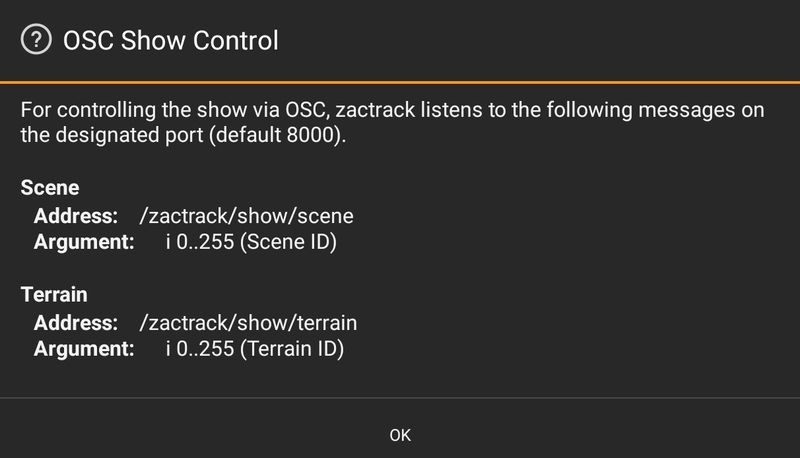Open Sound Control (OSC)
Open Sound Control (OSC) is a network communication protocol designed for exchanging real-time musical and multimedia data between computers and digital devices. It allows for the transmission of messages containing information about events, control parameters, and various media types.
OSC is commonly used in audio and interactive media applications for its flexibility and versatility in data exchange.
Within zactrack OSC can be handled as in- and output. As an output it can send coordinates via OSC, or send trigger commands. There are different kinds of OSC Fixtures for outputting data. OSC Input can assign fixtures or change settings.
For additional information about this protocol please read OpenSoundControl
OSC commonly uses unicast to transmit data. So it is necessary to add a destination IP.
In the zactrack Fixture Library are also some OSC Fixture Presets. There are predefined settings for different brands and different sound engines. It is also possible to import and export your own OSC Fixture Types.
To create an OSC Fixture Type, go to the Fixture Types Tab and click on the green plus Symbol.
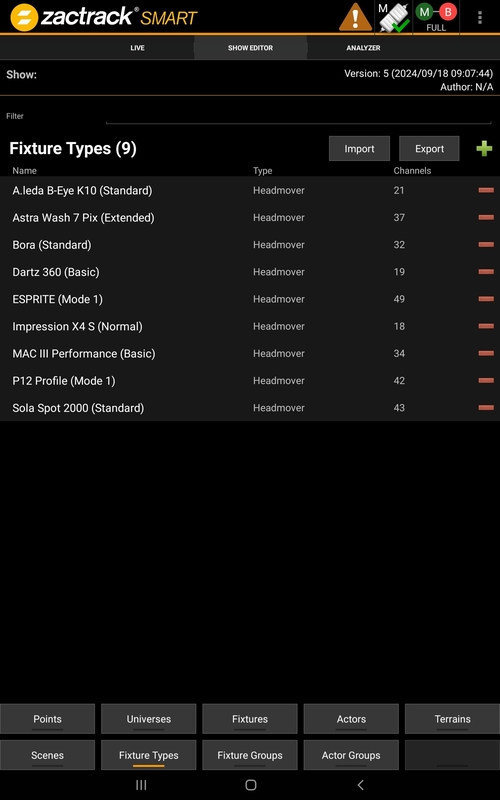
In the next window click Other Protocols and than Open Sound Control (OSC)
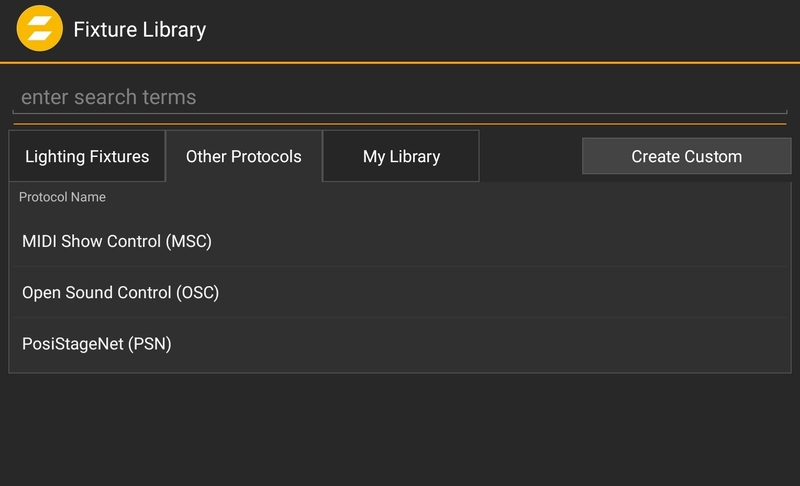
The Create New OSC Fixture Type window, shows different Options. It is possible to create an empty Type or choose a preprogrammed type.
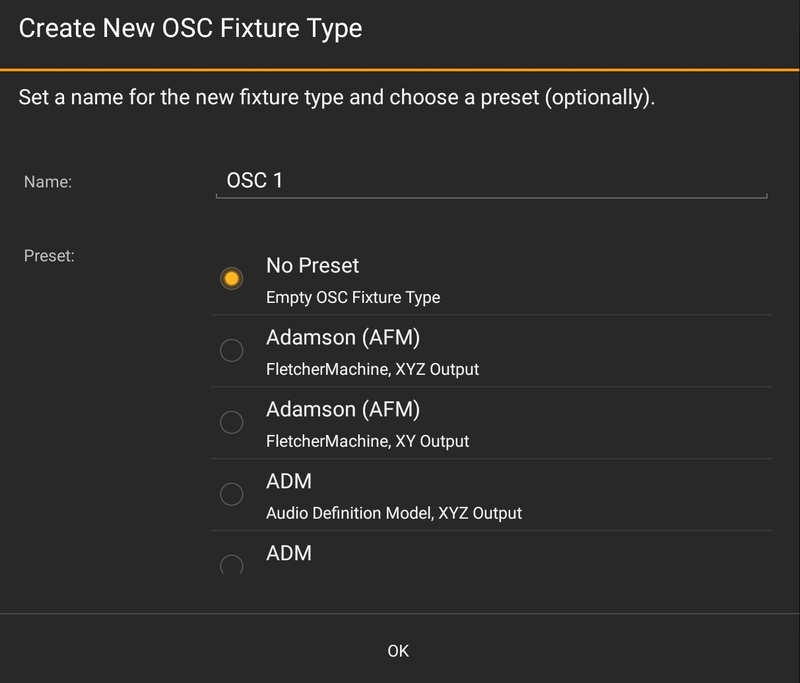
There are a lot of settings in the Fixture Type Setting window
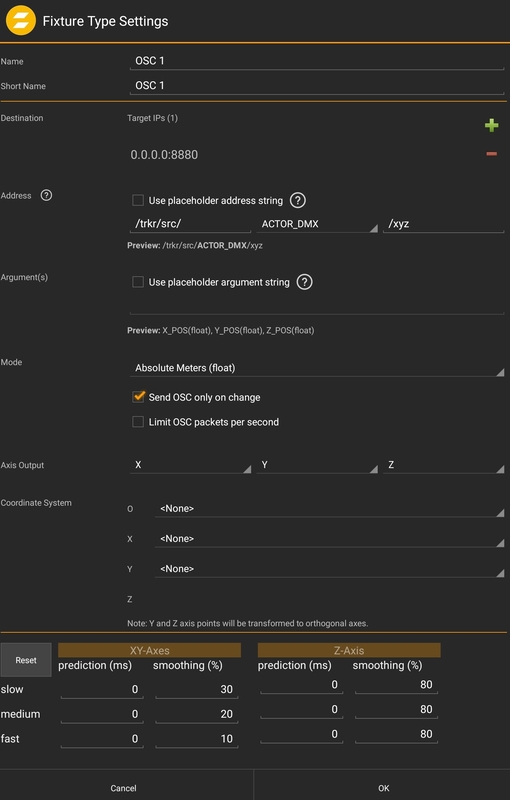
Destination
Add destination IP's and Ports
Address
PRE Address String
Selection of different Identifier
Different Identifier (None, Actor_DMX, Actor_Name, Fixture_ID, Fixture_Description)
POST Address String
Use Placeholder Address String
This option can replace the Pre/Post Address String. Under the ? sign, all possible variables are shown.
Preview
The preview shows the whole Address String
Argument
The Argument String contains, depending of the mode and axis setting, the output data. In case of a special requirement it is also possible to use a placeholder string.
Mode
Absolute Millimeters (int)
Outputting in absolute millimeters with an intenger data format
Absolute Round Centimeters (int)
Outputting in absolute centimeter with an intenger data format
Absolute Round Meters (int)
Outputting in absolute meters with an intenger data format
Absolute Meters (float)
Outputting in absolute millimeters with a float data format
Range (int)
With this option it is possible to set a custom range between origin and the desired CP of the axis. Output data is a intenger. e.g. from 0 to 100, -255 to 255
Range (float)
With this option it is possible to set a custom range between origin and the desired CP of the axis. Output data is a float. e.g. from 0.0 to 1.0
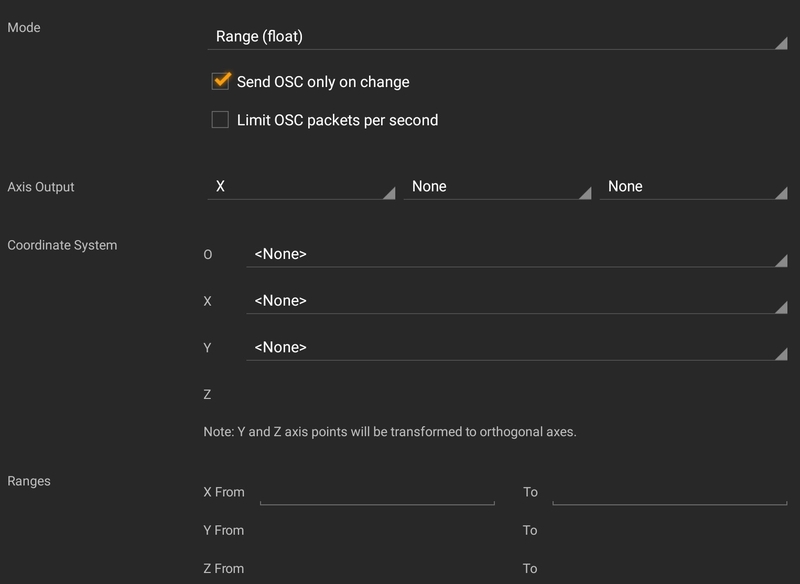
Additional window in Range mode.
Grid 2D (int)
In the grid mode, the osc will output only a grid Index depending in which grid position the tracker is. An additional grid window opens:
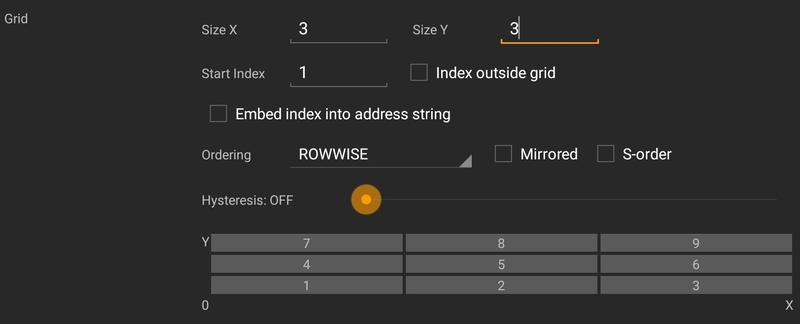
Size X Size Y
Defines the grid.
Tip
The startpoint is defined by the Origin Calibration Point. The End of X and Y is defined by the calibration Points of X and Y.
Start Index
Start number of Index
Index outside grid
It is possible to set an index outside of the rig
Embed index into address string
It is possible to embed the Grid Index into the Address String instead of the Argument String
Ordering
Different options for ordering
Mirrored
It is possible to mirror the order
S-order
Different option to Index numbering
Hysteresis (0-50%)
To avoid jumping on the edge of a grid, it is possible to add a hysteresis.
Checkbox Send OSC only on Change
It is possible to send OSC packets only if a change happened.
Checkbox Limit OSC packets per second
To limit packets.
Axis Output
It possible so send only certain axis or all of them
Coordinate System
The output coordinate System could be completely different to the tracking coordinate system. With Calibration points it is possible to create a completely different system. Also for range and grid, the CP for X and Y defines the endpoints.
Movement settings
Like a real fixture also in OSC it is possible to predict and smooth the position.
Add Fixture
Tip
After creating a Fixture Type it is also necessary to create a Fixture!
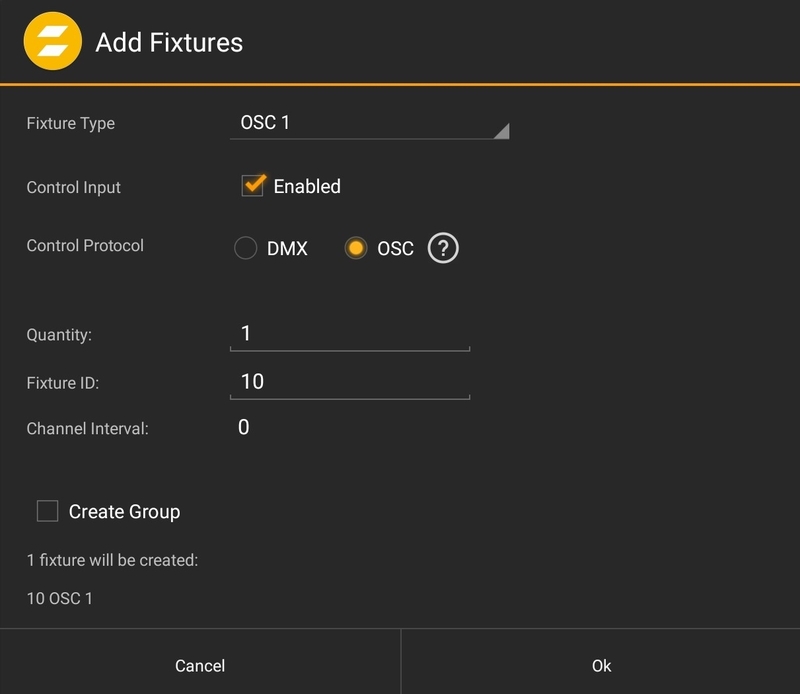
Under the TAB Fixtures, press the green + and select the Fixture Type. To control this Fixture a DMX or OSC control is available.
Upload Show

Press to the triangle to upload the Show to the server.
Fixture Control
To control a Fixture with OSC, just choose OSC as the Control Protocol.

Syntax for OSC String to control a Fixture
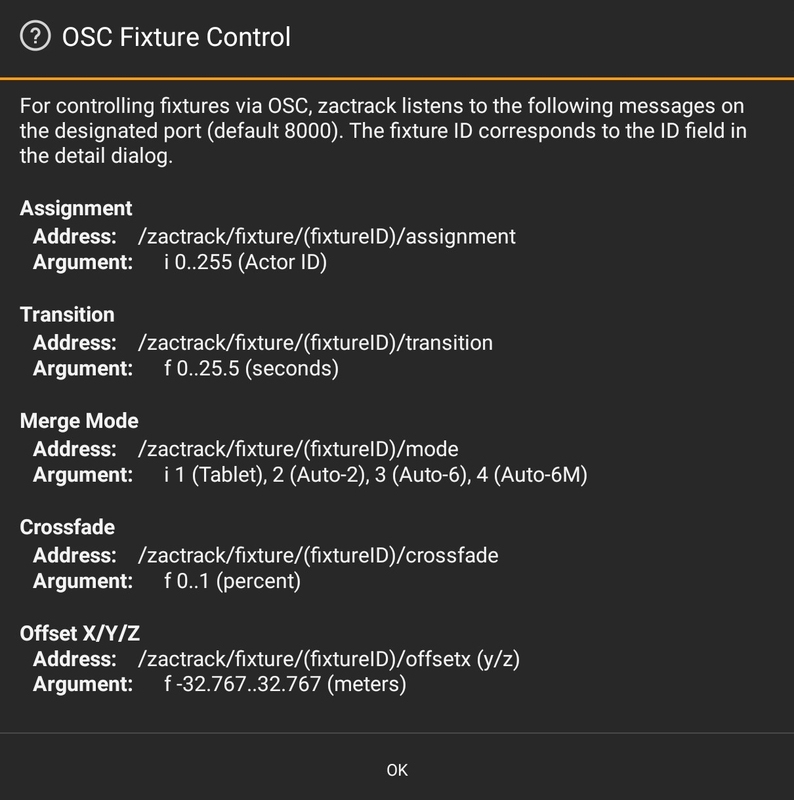
Actor Control
It is also possible to control an Actor thru OSC.
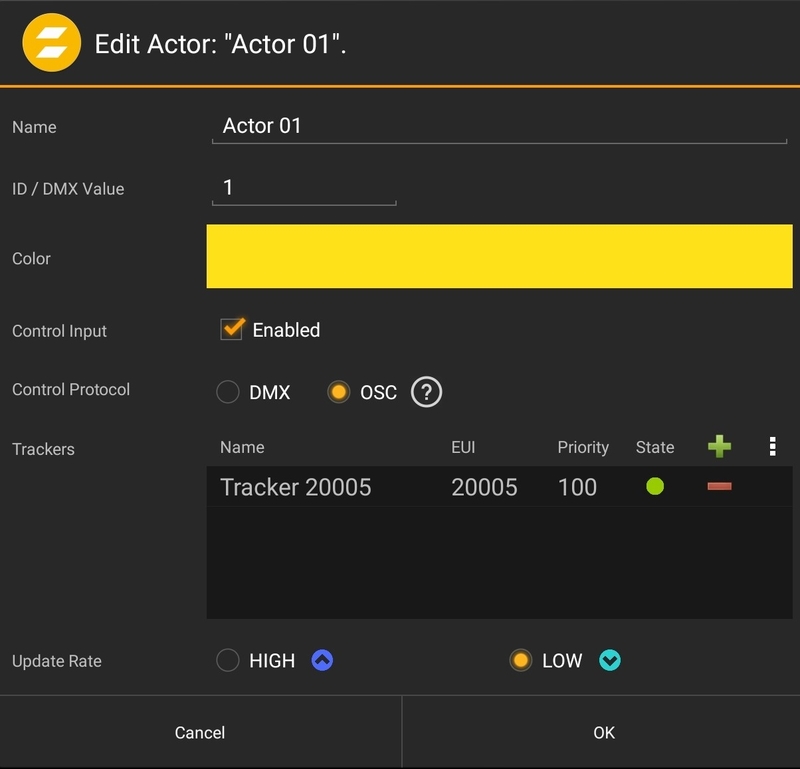
OSC Syntax for controlling an Actor
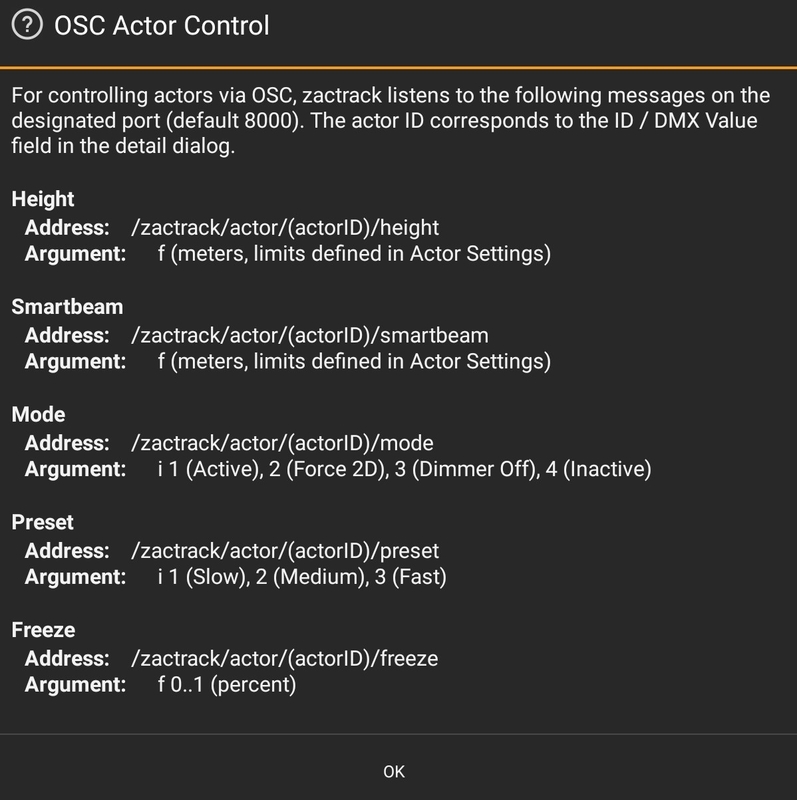
Show Control
Also the Show Control to set Terrain and Scenes can be done with an OSC command.
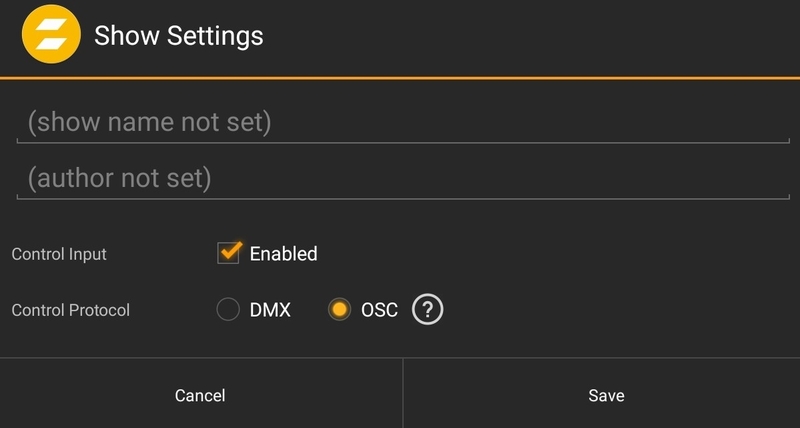
Syntax for OSC Show Control
